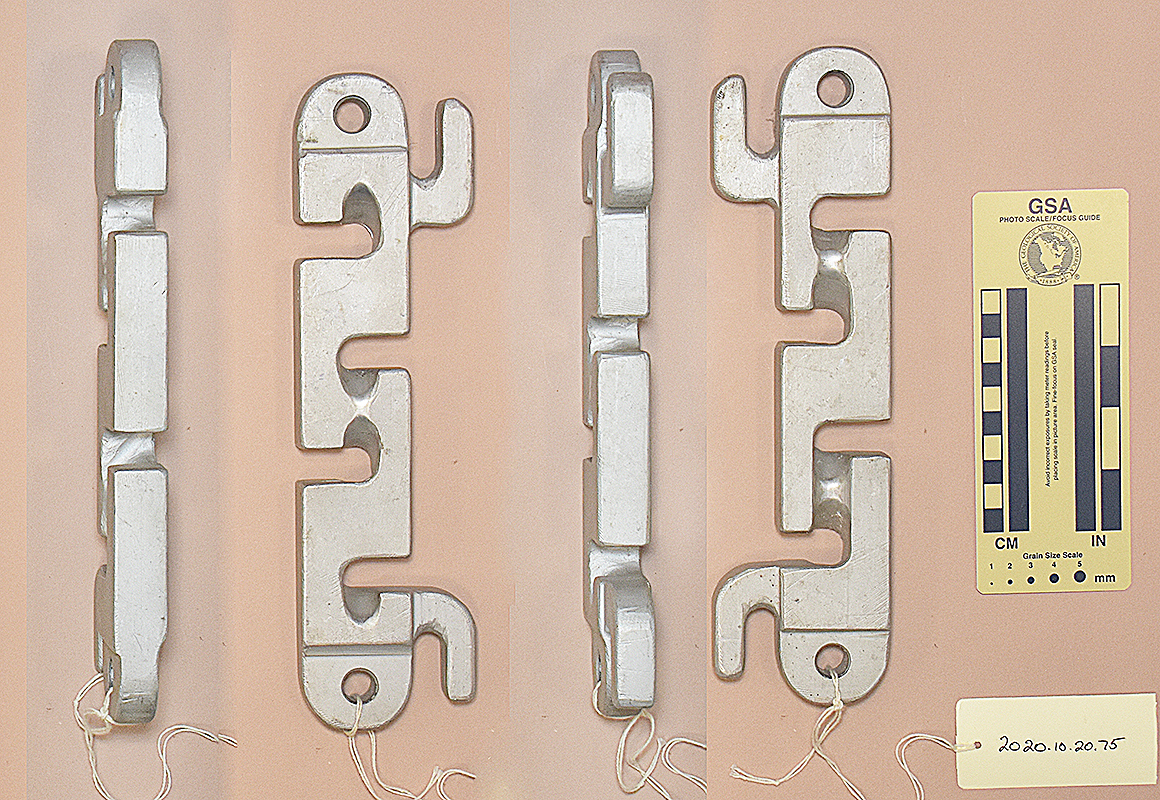Technical Details
I made this copy of Bill Torode's Abalone Descender in 2023.
I milled this copy from
Fortal® 7075 aluminum. It is 279 mm. tall, 67 mm. wide, 21 mm. thick, and weighs 591 g.
 Bill Torode's original is in the N.S.S. Museum. I asked Dave Hughes to see if Bill had more information on the original. Here is Dave’s reply:
Bill Torode's original is in the N.S.S. Museum. I asked Dave Hughes to see if Bill had more information on the original. Here is Dave’s reply:
As per your request, I spoke with Bill Torode about this subject on Saturday. Bill said that he did not make this rappel device himself, but that it was constructed by a caver in California instead. Bill could not remember the caver's name. I pinged him with a few suggestions, but Bill said that those names did not ring a bell.
Bill said that the device was called an Abalone Descender. He seemed quite confident in this nomenclature, although I do not see much similarity between that sea creature and the device depicted.
I made this copy to dimensions scaled from photographs of the original, with some variations. The original appears to be 6061, but I used Fortal® because I had a scrap end that was nearly the perfect size. Fortal® is stronger and more abrasion resistant, but is heavier and has a 20% lower thermal conductivity. None of these differences have any practical significance for this whaletail.
Gerald Wood's original whaletail had all the slots on the same side. He and his friends were concerned about the rope
coming out of the whaletail. Their testing suggested that it would not, but cavers soon proved otherwise. Australian
cavers, led by Neil Motgomery, sensibly adding a safety
gate.
The Abalone Descender is interesting because it addresses the rope retention problem differently. By alternating slots side-to-side, the rope effectively wraps around the whaletail, and can only come out of the lowest slot. This arrangement is theoretically weaker, but concerns are ridiculous considering the dimensions of the device. A disadvantage of the alternating slots is that major friction adjustments require lifting the trailing rope over one's head; however, this is a four-slot whaletail and reducing friction to three bars (two slots) is rather extreme.
The Abalone Descender adds horns to the side of a whaletail to provide an easy tie-off. They are not designed for adding additional rappel friction, but some hand-filing to provide a smooth rope path could make this a viable option.
How would I modify this design? Several ideas come to mind:
- Eliminate the top eye to save weight and length.
- This sacrifices reversibility, but whaletails last a long, long time.
- Add a fifth slot on the same side as the lower slot.
- Keep slots 1 and 3 on the opposite side for security.
- Cut the entry slots at 45° like a traditional whaletail.
- This will further help the rope stay in place.
- I would eliminate the tie-off horns.
- I don't need them, preferring to rely on an ascender for a secure tie-off.

For far more content, use a larger monitor and a full-width window.
Hundreds of cell phone users complained and asked me to for a simpler, mobile friendly site. In particular, they wanted me to limit each page to a small number of pictures and minimize my use of text. This new site provides what they asked for.

